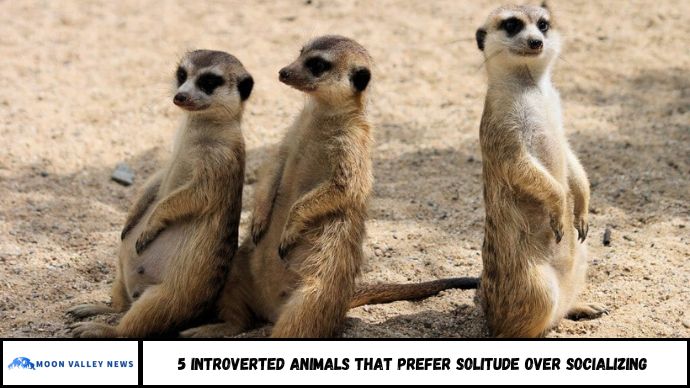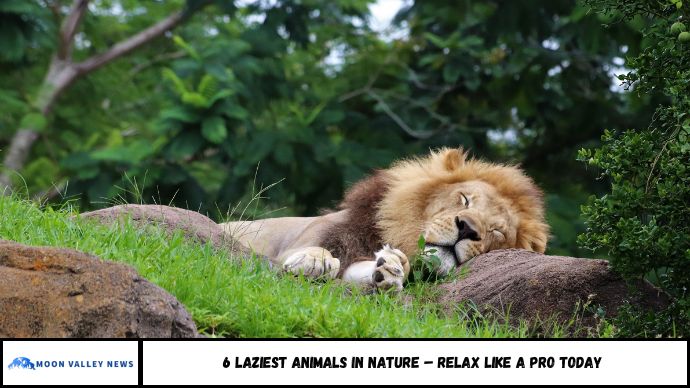Some animals thrive in groups—but others thrive in solitude. In this article, we explore 5 introverted animals known for their solitary behaviors, examining how and why these species avoid social interaction and what this reveals about survival in the wild.
Some animals are naturally social and thrive in groups, where they share responsibilities such as foraging, protection, and raising offspring. In species like elephants, whales, and chimpanzees, social living goes even further—they display emotional intelligence and form deep, lasting bonds. Meanwhile, animals like bees operate within highly organized social systems that not only improve efficiency but also enhance immunity against diseases and infections.
Are There Introverted Animals in the Wild? Absolutely.
While many animals live in herds, packs, or flocks for protection or cooperation, not every species thrives on social interaction. Some animals are naturally introverted—choosing isolation, hunting alone, and avoiding contact unless absolutely necessary.
This behavior isn’t about personality but evolutionary advantage. For some species, solitude enhances survival by reducing competition, avoiding predators, or conserving energy.
In this article, we’ll cover:
- What defines an introverted animal
- 5 species that live and hunt alone
- How these behaviors benefit them
- What we can learn from solitary creatures
What Makes an Animal “Introverted”?
In biological terms, an “introverted” animal:
- Avoids social structures or communal living
- Spends most of its life alone
- Interacts with others mainly for mating
- Relies on independence for food, shelter, and survival
This behavior contrasts with social species like wolves, dolphins, or elephants that rely heavily on group dynamics.
5 Introverted Animals and Why They Prefer Solitude
1. Snow Leopard
Native to the high mountains of Central and South Asia, the snow leopard is a classic loner.
- Lives in harsh, remote territories
- Hunts alone across large ranges (up to 1,000 sq. km)
- Communicates via scent marking, not direct interaction
Why it works: The low prey density in its habitat makes solitary hunting more effective than group efforts.
2. Giant Panda
Despite their iconic status, giant pandas are surprisingly unsocial.
- Spend most of their day eating bamboo alone
- Avoid others except during mating season
- Extremely territorial
Why it works: Their food source is abundant but low in nutrition, requiring long, undisturbed feeding hours.
3. Leopard
Unlike its cousin, the lion, the leopard is known for being solitary and stealthy.
- Hunts alone, mainly at night
- Stashes food in trees to avoid scavengers
- Male and female leopards only meet briefly to mate
Why it works: Solitude enhances stealth, which is key to the leopard’s ambush hunting style.
4. Koala
The adorable koala may seem social in zoos, but it’s naturally introverted.
- Highly territorial and avoids others
- Sleeps up to 20 hours a day in eucalyptus trees
- Only interacts for breeding
Why it works: Their energy-conserving lifestyle is supported by solitude, as their eucalyptus diet offers limited nutrition.
5. Sloth
The sloth is an introvert icon—slow, quiet, and fiercely solitary.
- Moves slowly and deliberately to avoid predators
- Lives alone in treetops, blending into surroundings
- Interacts rarely outside of reproduction
Why it works: Isolation reduces risk from predators and allows for a low-energy, survival-first lifestyle.
The Benefits of Solitude in Nature
Introverted behavior in animals isn’t a flaw—it’s an adaptation.
Key advantages include:
- Reduced competition for food and mates
- Lower risk of disease transmission
- Improved stealth for predators or prey
- Efficient energy use, especially in resource-scarce environments
These behaviors show that solitude can be just as powerful a survival strategy as social collaboration.
Data and Scientific Insights
- A 2023 study in Animal Behaviour found that solitary carnivores like leopards have higher hunting success rates than some pack hunters in dense habitats.
- According to the World Wildlife Fund (WWF), giant pandas interact with others only 0.1% of the time in the wild.
- The IUCN notes that koalas’ solitary behavior reduces aggressive encounters, helping them survive urban encroachment.
These facts support the idea that introversion in animals is an evolved trait—not an exception.
FAQs
1. Are some animals truly solitary their entire lives?
Yes. Many solitary animals live alone except briefly for mating or raising young.
2. Why are some animals introverted instead of social?
It’s an evolutionary response to habitat, food availability, or predation risk.
3. Do solitary animals get lonely?
Not in the human sense. Their biology supports independence, not emotional companionship.
4. Are introverted animals less intelligent?
No. Intelligence doesn’t correlate with social behavior. Many solitary species are highly adaptive.
5. Can solitary animals be kept as pets?
Most shouldn’t. Animals like koalas or snow leopards require specific, solitary environments to thrive.
6. Do solitary animals ever form temporary groups?
Rarely. Some may gather at feeding spots or during mating season but remain largely independent.
Conclusion
Introverted animals remind us that being alone in nature isn’t a weakness—it’s often a strength. From the snow leopard’s independence to the sloth’s quiet lifestyle, these creatures show that solitude can be a strategic and successful way of life.
As humans, we often value connection, but in the animal kingdom, silence, stillness, and self-reliance can be the ultimate survival tools.







